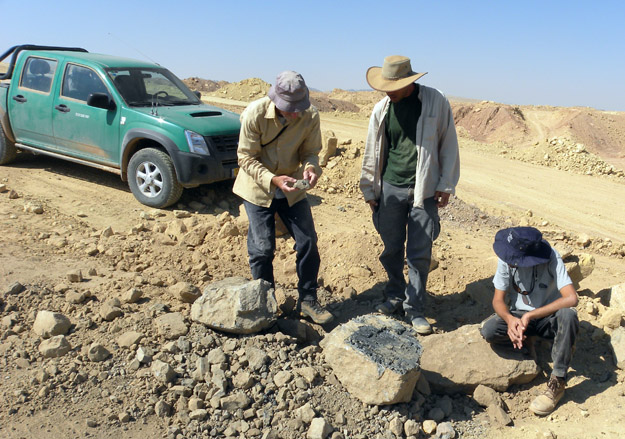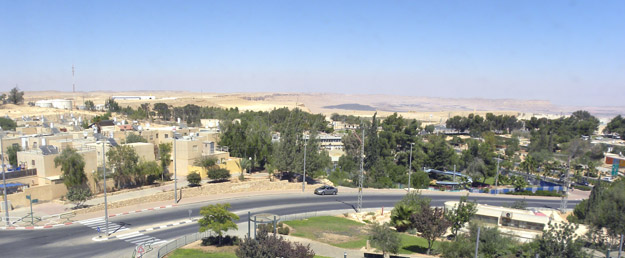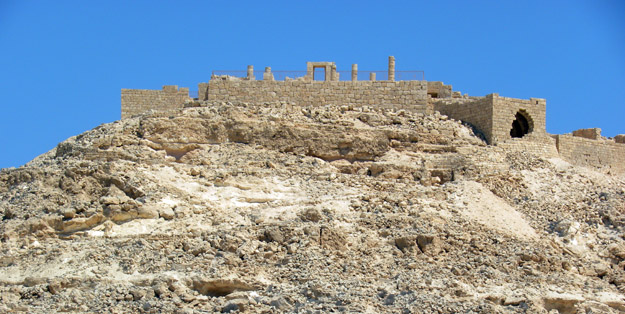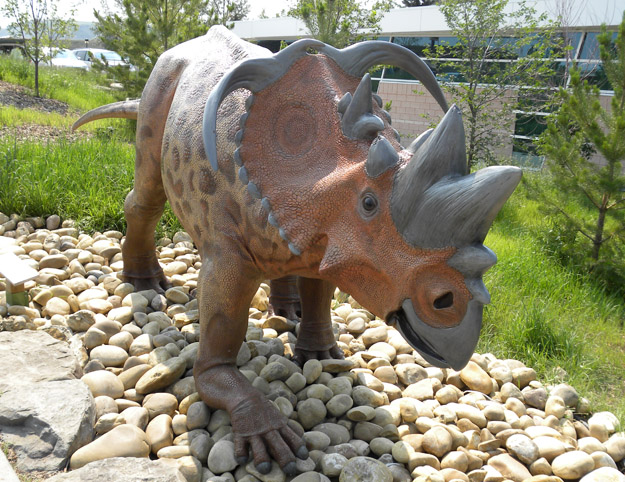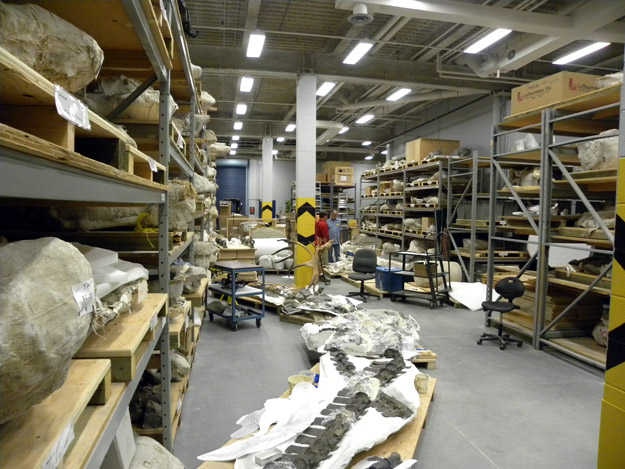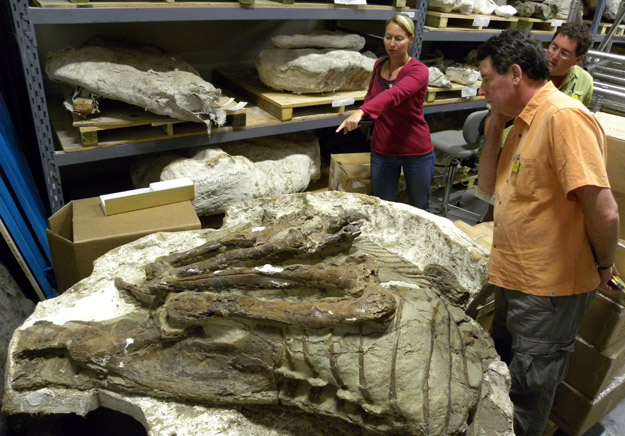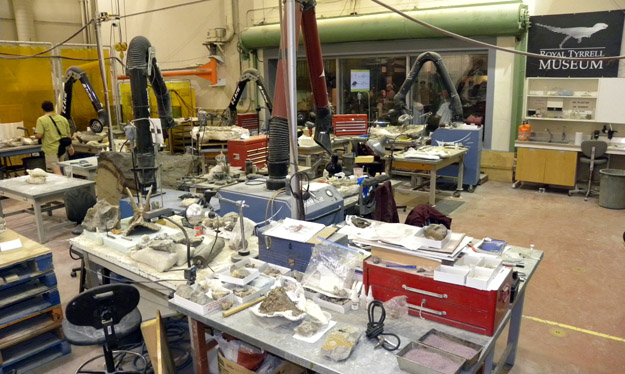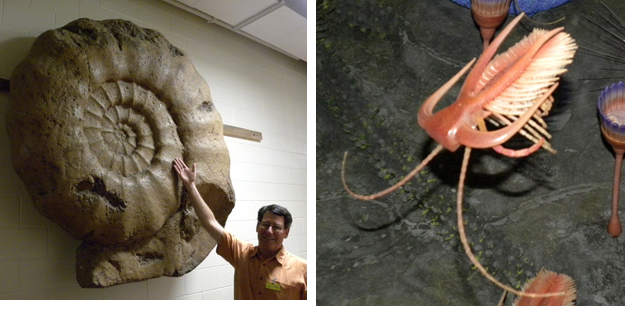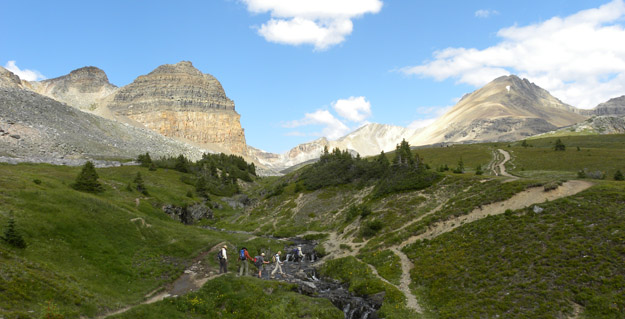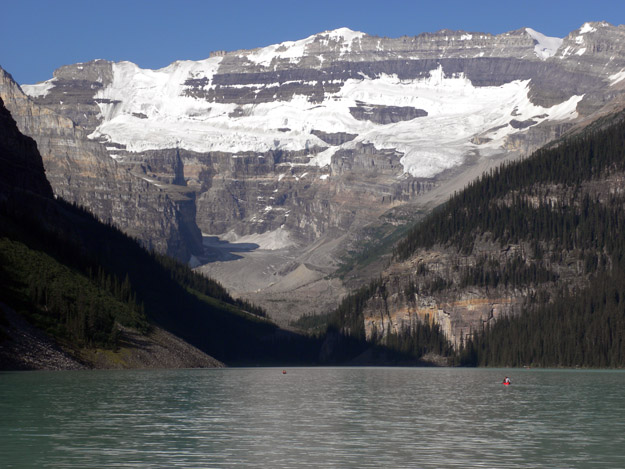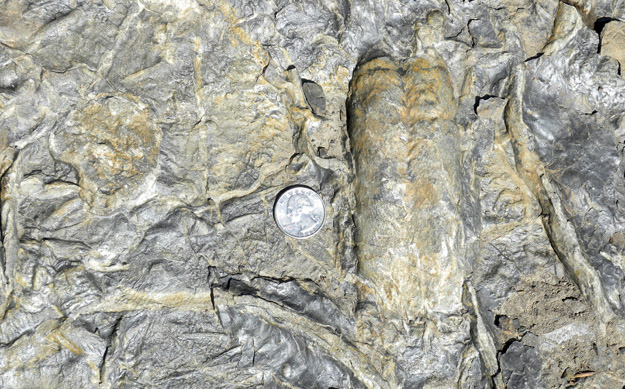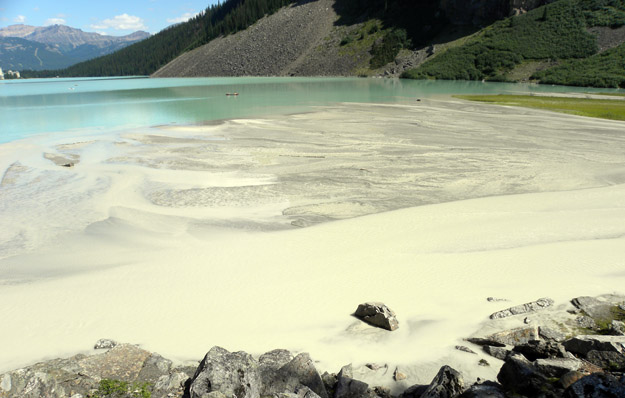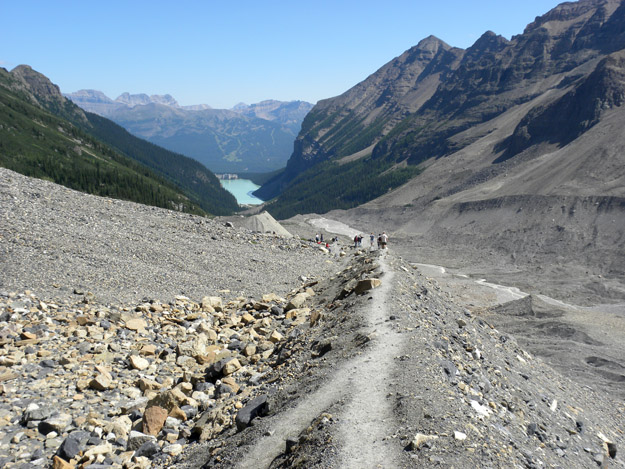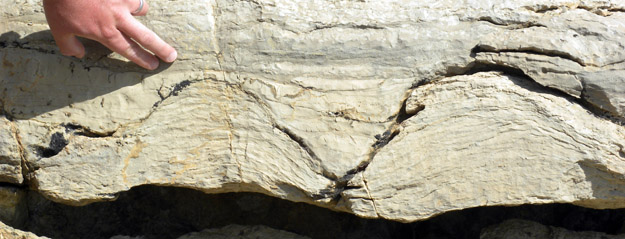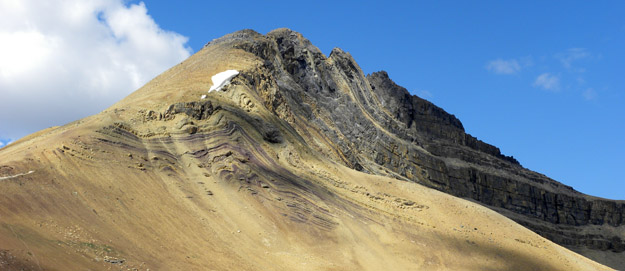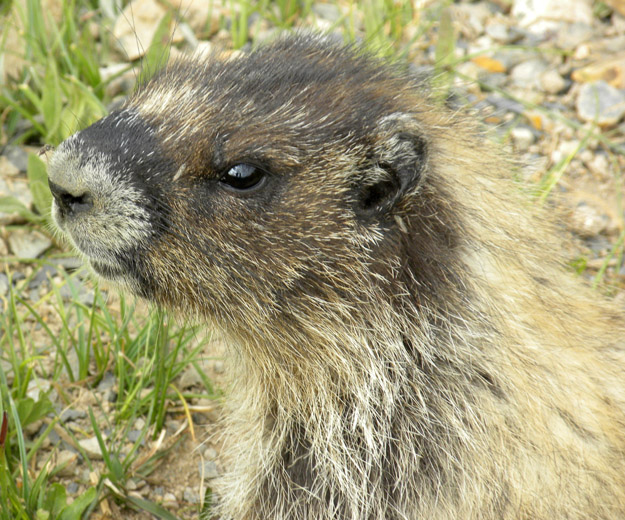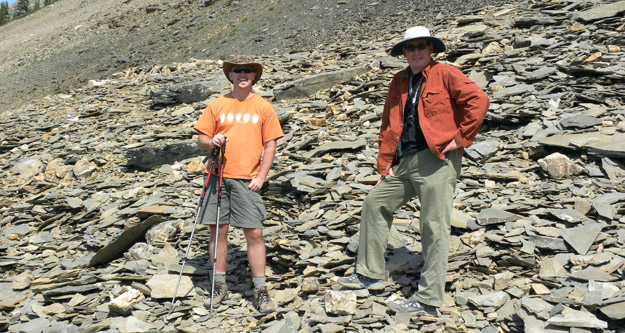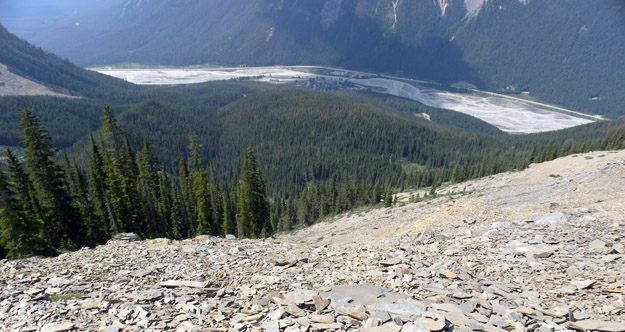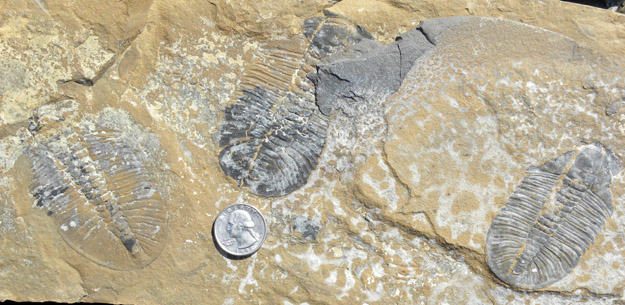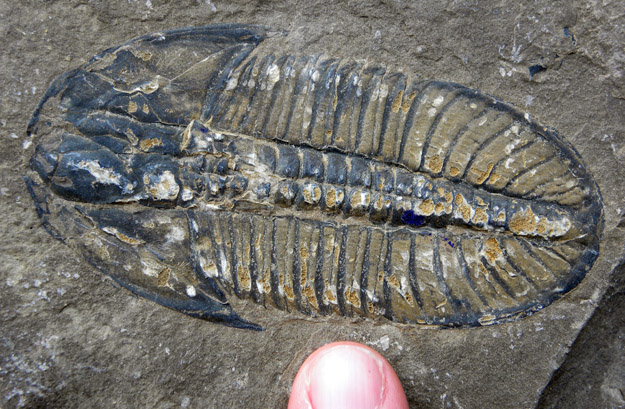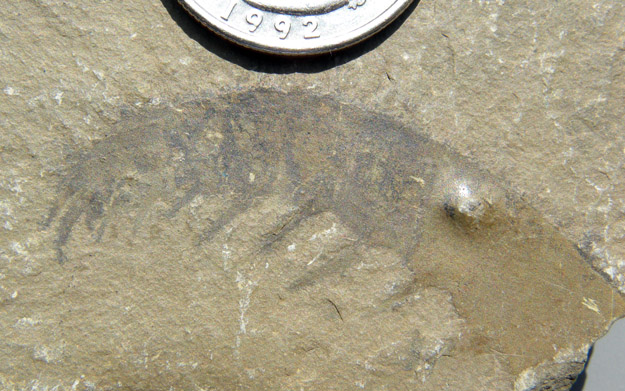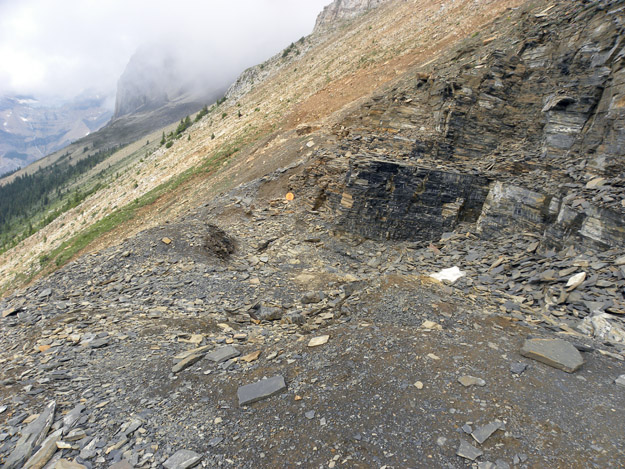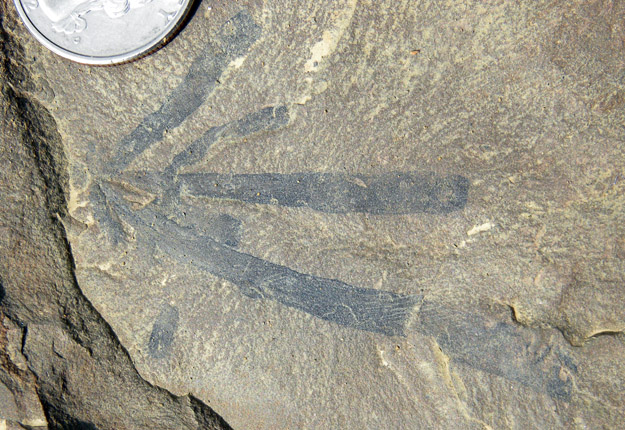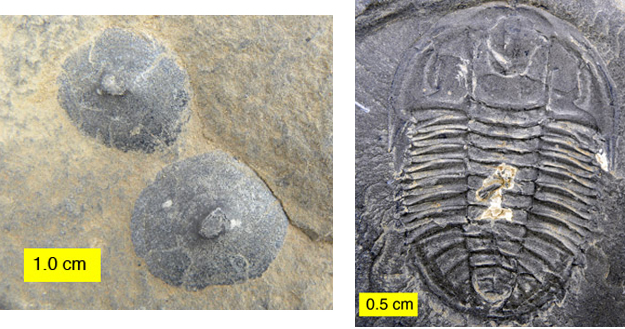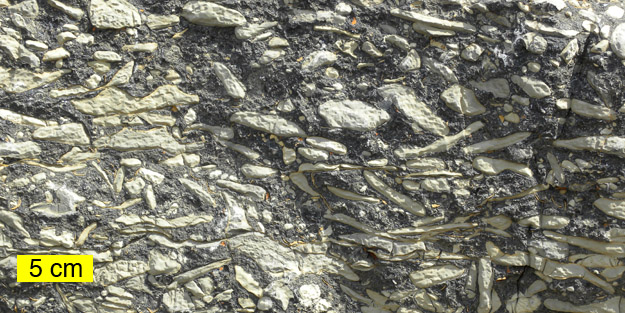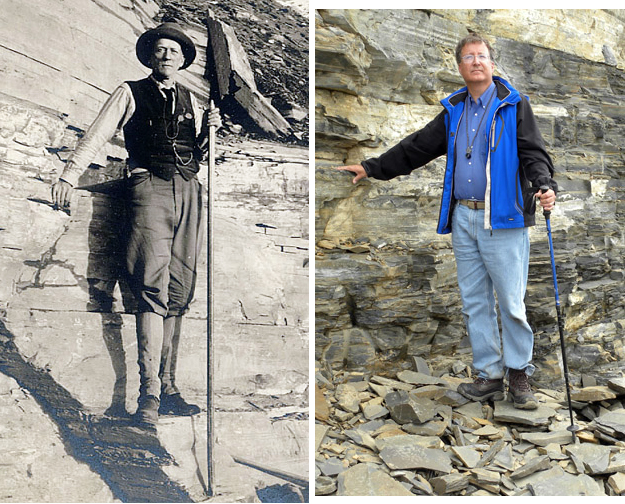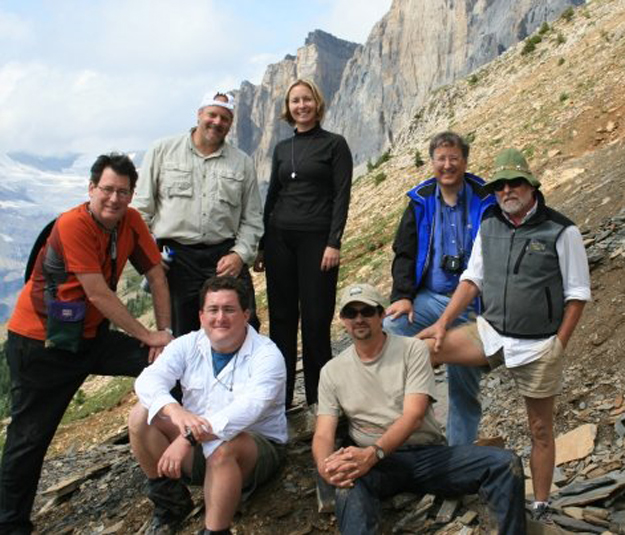MAKHTESH GADOL, ISRAEL–During the afternoon Yoav and I drove to the center of this magnificent erosional crater to visit familiar sites and do some preliminary surveys. It was deliciously hot and dry — just the way I like it. I concentrated on the middle of the Matmor Formation, a Jurassic (Callovian) unit of limestones and marls loaded with diverse fossils. I scoped out the sites I want to measure, describe and sample in the next few days. It was fun to see those places where several Wooster students did their Independent Study fieldwork over the years, and to make plans for the next set.
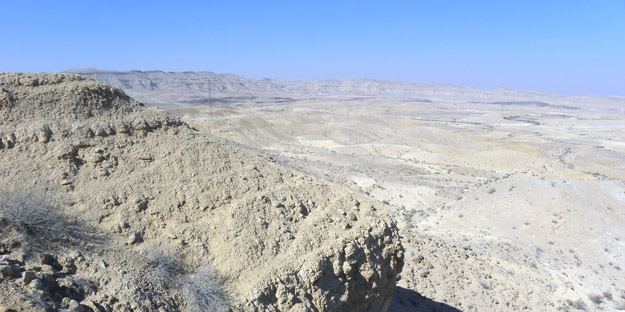
Makhtesh Gadol looking from the Matmor Hills near the center to the north (N30.93458°, E34.97387°). The outcrop in the foreground has yielded wonderful fossils from the middle of the Matmor Formation.
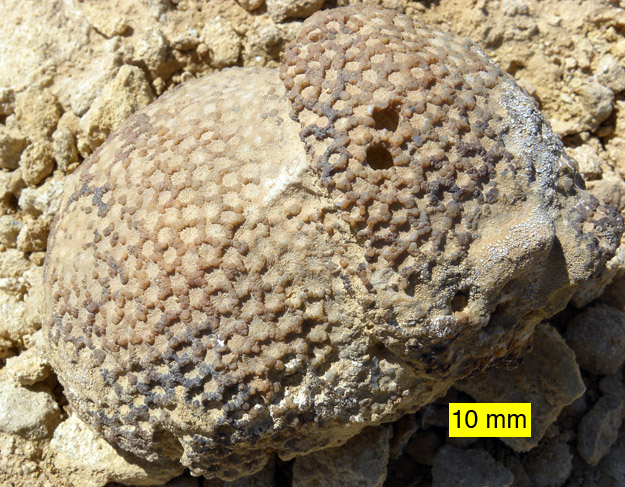
This is a fossil coral which was bored by bivalves while it rested on a Jurassic seafloor. You can see two of the boreholes clearly on the right. The coral shows compound growth. Apparently the lower one was shifted to a position almost at right angles from its original orientation, and then it budded off the capping portion on the right.



